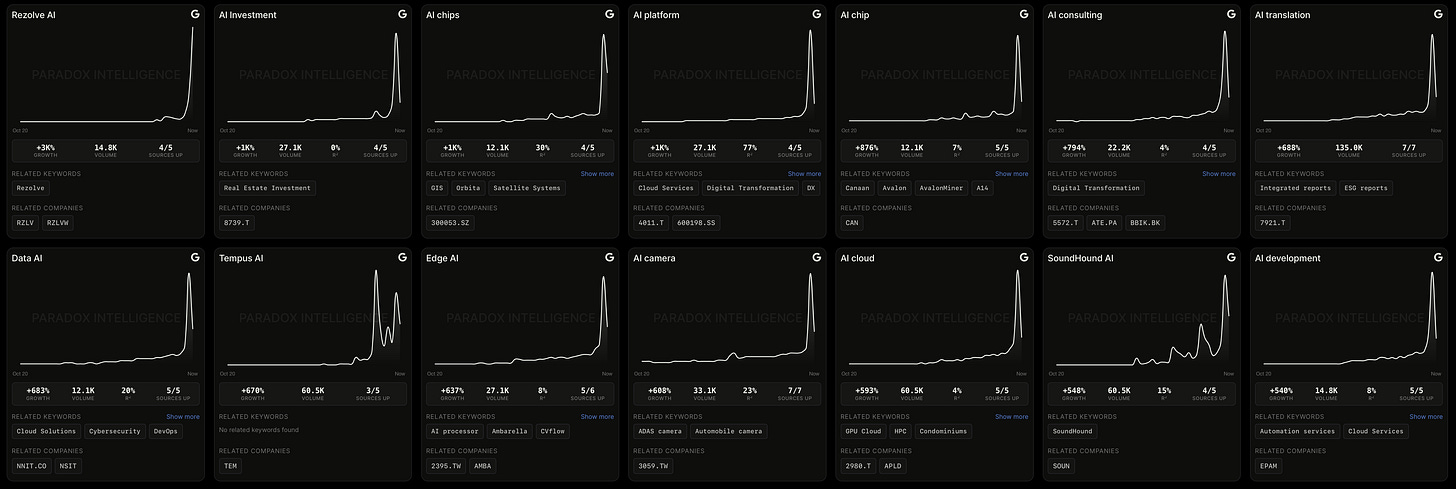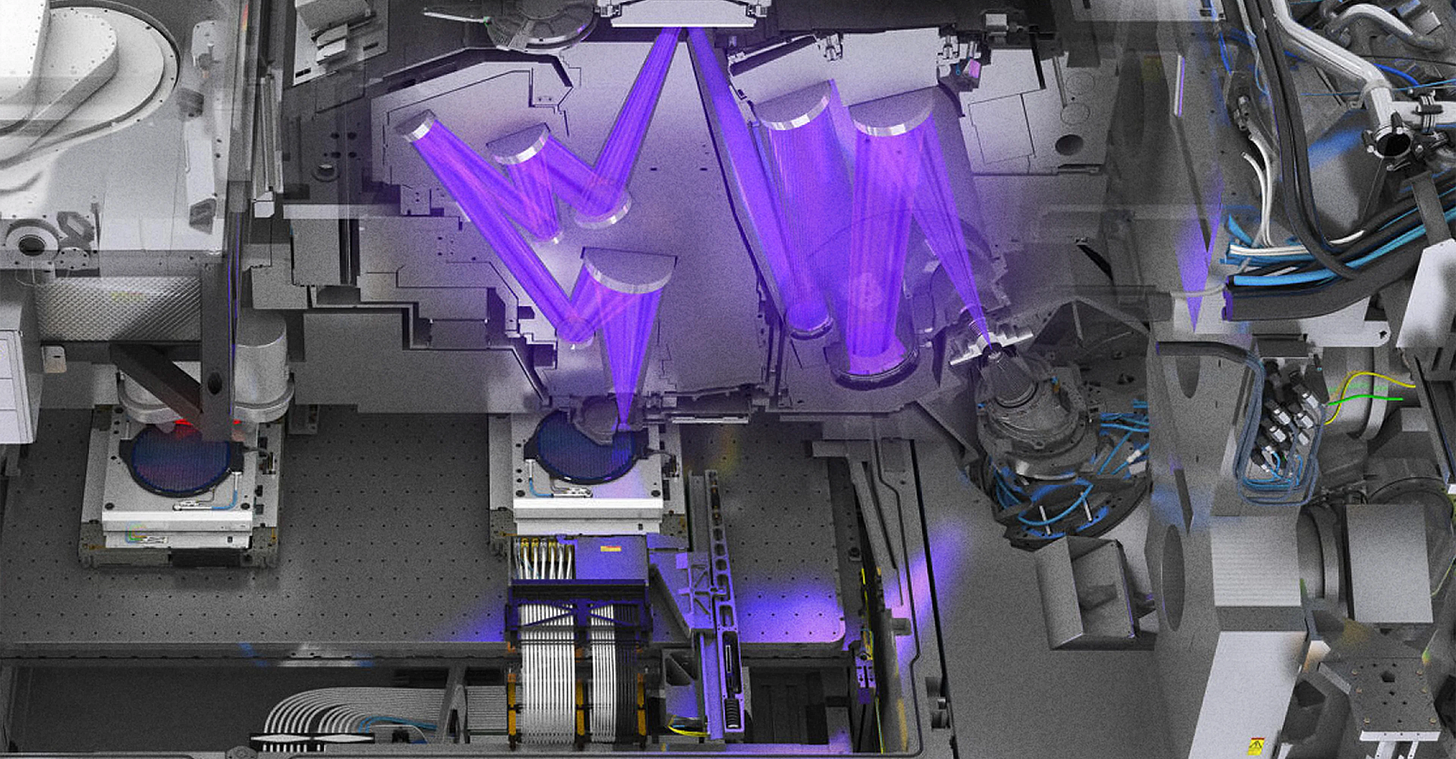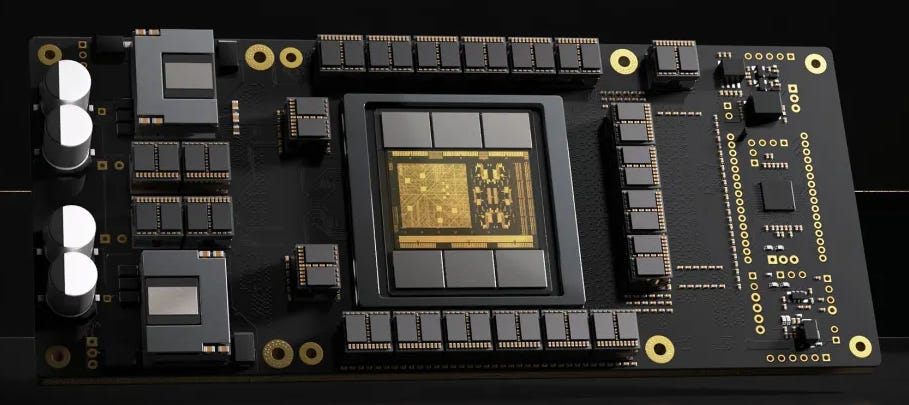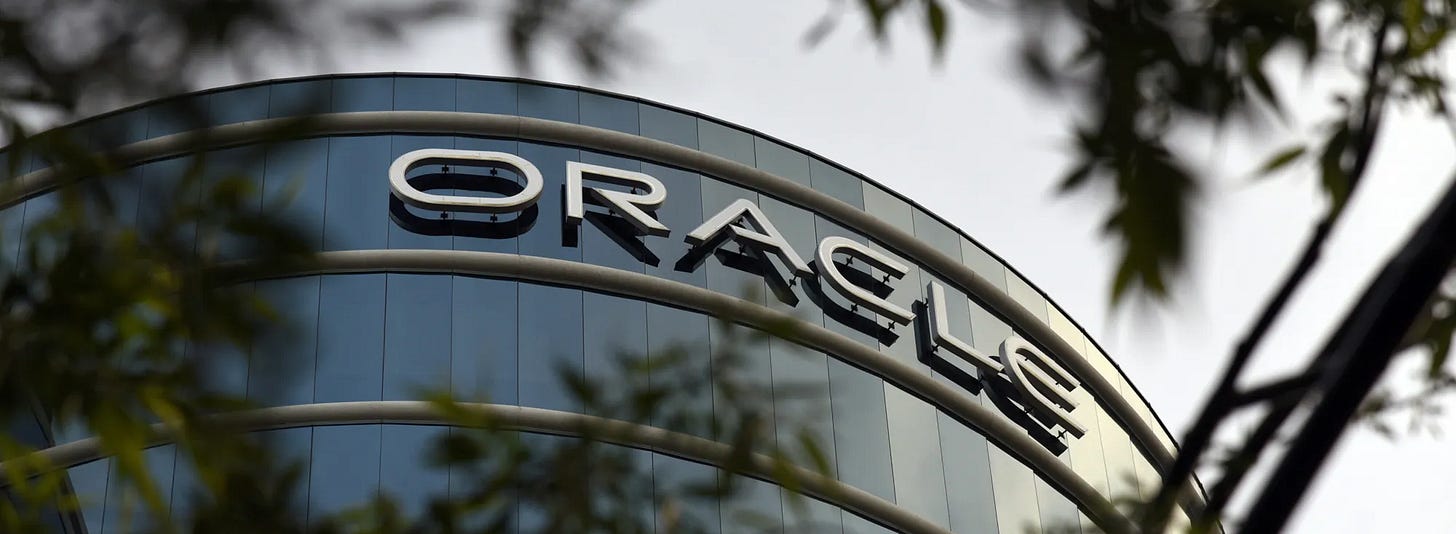Why the AI Bubble Critics Are Missing the Point.
AI Companies That Will Still Matter in 2030
Skeptics classify AI as the latest tech bubble. They may be right about short-term volatility. Speculation will create price swings, and valuations will overshoot fundamentals. But the long-term trajectory is clear. Like the steam engine, electricity, and digital computing before it, artificial intelligence will trigger a wave of creative destruction across the global economy. AI will transform productivity, labor markets, and competitive dynamics at a scale most investors currently underestimate.
AI brings a permanent shift in how the world operates.
This transformation will create investment opportunities far beyond AI companies themselves. The most significant returns historically come not from new technologies alone but from their ripple effects across the economy, society and industry.
Energy exemplifies this pattern already. AI infrastructure requires massive power capacity, but energy supply remains heavily constrained, creating significant bottlenecks and investment opportunities (see our recent analysis on the energy sector). Similar supply-demand imbalances will emerge across multiple sectors as AI deployment accelerates. Change always creates new opportunity, whether long or short. This analysis focuses exclusively on direct AI infrastructure and core AI companies. Future articles will examine additional sectors transformed by AI adoption, identifying companies positioned to capitalize on these ripple effects.
Three forces will inevitably drive AI investment for decades to come:
The US-China AI race makes this a national security imperative. Governments will continue funding AI development regardless of economic cycles. Countries with the best AI will be able to build the best military weapon systems. Therefore, AI leadership is non-negotiable from a national security perspective.
Competitive pressure will force adoption. Companies that integrate AI effectively will deliver identical outputs at lower costs. Those that don’t will lose market share to competitors who do. Capitalism’s selection pressure leaves no room for laggards. This is survival of the fittest and AI adopters will be the fittest.
Rapid capability improvements accelerate deployment. As AI systems become more reliable and easier to implement, adoption curves will steepen.
Capitalism’s selection pressure leaves no room for laggards. This is survival of the fittest and AI adopters will be the fittest.
At Paradox Intelligence, we track AI developments to identify investable opportunities. AI accounts for the fastest-growing online keywords searches, signaling massive shifts in market attention and capital allocation. Deep understanding of this technology provides an edge in predicting second-order effects, like surging energy demand driven by AI infrastructure. We believe AI will allow for new innovations and technologies that we cannot yet conceptualize at the moment, proving a constant flow of new pockets of change resulting in new pockets of investment opportunities.
This report expands our August 2025 The AI Revolution review with deeper analysis of companies positioned for durable success. Our focus: firms with genuine competitive moats, advantages in large-scale manufacturing, infrastructure control, or technological leadership that create lasting barriers to entry. We exclude companies in commoditized areas like standard hardware assembly or niche power solutions.
The companies profiled below currently demonstrate defensible advantages worth understanding.
ASML (ASML): Semiconductor Lithography
ASML Holding (ASML) holds the leading position in advanced lithography equipment and serves as the primary supplier for chip manufacturing tools essential to AI-enabling hardware. Its competitive edge stems from decades of investment in cutting-edge lithography processes, allowing clients to focus on fabrication while ASML handles the enabling machinery. This expertise creates high barriers to entry, as even competitors like Nikon and Canon struggle to match ASML’s capabilities despite significant investments. ASML commands over 80 percent of the lithography equipment market and 100 percent of EUV systems, with strong client relationships further widening this lead. It supplies lithography systems to TSMC, Samsung, Intel, and major foundries like GlobalFoundries. About 65 percent of its system revenue comes from logic segments essential to AI applications. Recent financials show record revenues with gross margins near 52 percent, and valuations appear reasonable given market share gains and limited tariff exposure. Geopolitical tensions and supply chain disruptions present risks, but ASML’s scale and technological lead make it a foundational investment in AI hardware.
TSM (TSMC): Semiconductor Fabrication
Taiwan Semiconductor Manufacturing Company (TSMC) holds the leading position in advanced chip manufacturing and serves as the primary foundry for AI-enabling hardware. Its competitive edge stems from decades of investment in cutting-edge chipmaking processes, allowing clients to focus on design while TSMC handles production. This expertise creates high barriers to entry, as even competitors like Intel struggle to match TSMC’s capabilities despite significant investments. TSMC commands 71 percent of the third-party foundry market and 90 percent of advanced process nodes, with strong client relationships further widening this lead. It supplies semiconductors to Apple, Nvidia, AMD, Broadcom, Intel, and major cloud providers like Amazon, Google, Microsoft, Meta, and Tesla. About 57 percent of its revenue comes from high-performance computing and related segments essential to AI applications.
Recent financials show record revenues with operating margins near 50 percent, and valuations appear reasonable given market share gains and limited tariff exposure. Geopolitical tensions and supply chain disruptions present risks, but TSMC’s scale and technological lead make it a foundational investment in AI hardware.
Hyperscalers at the Forefront: GOOGL (Alphabet), MSFT (Microsoft), AMZN (Amazon)
Major cloud operators are strategically positioned to capitalize on AI expansion through integrated infrastructure and application layers. These firms benefit from massive scale, vast data resources, and network effects that create deep competitive advantages in AI infrastructure and services.
Alphabet (GOOGL) leverages Google Cloud and its Gemini framework to deploy custom TPU chips that deliver significant efficiency gains in computation, memory, and bandwidth for AI workloads. Its edge arises from unparalleled data from Google Search and YouTube, combined with integrated AI across its ecosystem, supporting ad revenue growth, cloud margin improvements, underpinned by a strong Rule of 40 metric balancing growth and profitability.
Microsoft (MSFT) is allocating $80 billion in 2025 capital expenditures toward AI-optimized data centers and proprietary silicon, fostering reliable partnerships and margin improvements through operational AI integration. Its moat is rooted in enterprise software dominance via Windows, Azure and Office, creating high switching costs and ecosystem lock-in.
Amazon’s (AMZN) AWS segment posted 17 percent growth despite capacity limitations and is driving AI-powered efficiencies and e-commerce durability against tariffs, from under-appreciated advertising and cloud contributions. AWS provides a unique advantage in AI-as-a-Service, with internal AI applications enhancing operating leverage across its ecosystem.
These companies face regulatory scrutiny and capex intensity risks, but their scale and ecosystem integration offer durable exposure to AI monetization.
Semiconductor Innovators: NVDA (Nvidia), AMD (AMD), AVGO (Broadcom), ARM (Arm Holdings), and MU (Micron)
Specialized processors and memory solutions are core to AI advancement.
Nvidia (NVDA) maintains over 90 percent market share in accelerators, with its Blackwell and Rubin architectures positioned to address surging inference demands. Its moat is built on the CUDA software ecosystem and full-stack integration of hardware and software, creating unmatched barriers through developer lock-in and performance advantages. Supported by substantial global capex spending on AI infrastructure, CUDA’s ecosystem lock-in, and sustained demand from markets including China and OpenAI initiatives, Nvidia exhibits a high Rule of 40 score, though valuation premiums and competition warrant consideration.
AMD’s (AMD) Instinct lineup secured a 6-gigawatt OpenAI commitment, potentially doubling data center revenues. Its edge lies in x86 architecture licensing and integrated CPU-GPU designs, enabling competitive performance in memory-intensive inference and capturing one-third of generative AI segments, supporting a 38.5 percent CAGR across diversified operations.
Broadcom (AVGO) commands 75 percent of custom ASIC markets for cloud providers, reinforced by a substantial OpenAI collaboration targeting 10-gigawatt capacity. Its competitive advantage derives from expertise in custom AI chips and high-performance networking switches/routers, allowing it to benefit from AI tasks without direct GPU competition. Ethernet leadership further strengthens its networking contributions, with AI revenue rising 63 percent year over year to $5.2 billion in its fiscal third quarter.
Arm (ARM) Holdings is advancing efficient designs for edge AI, with scalable architectures via 2025 prototypes. Its moat is the IP licensing model, which is ubiquitous in mobile and extending to AI edge computing, providing royalty streams without manufacturing risks.
Micron (MU) holds 21 percent of the high-bandwidth memory market, with capacity sold out through 2025, supplying key players amid a 30 percent AI memory CAGR and forward P/E around 11. Its stronghold comes from scale in memory production and specialized HBM technology, insulating it from tariffs and benefiting from explosive AI demand.
Enabling Infrastructure: ANET (Arista Networks), ORCL (Oracle), AMAT (Applied Materials)
Support systems are essential for AI deployment.
Arista (ANET) Networks excels in data center switching and is collaborating on 400G/800G solutions for low-latency parallel processing. Its edge is software-driven networking via the EOS operating system, enabling customizable, high-performance solutions for cloud-scale AI environments.
Oracle’s (ORCL) platforms, including AI Database 26ai, are driving over 50 percent OCI growth and supporting AI workloads through strategic collaborations. Its competitive advantage is leadership in enterprise databases with high switching costs, extended to AI-optimized cloud services.
Applied Materials (AMAT) supplies fabrication equipment and is benefiting from tariff resolutions and what some see as undervaluation in the upstream AI chain. Its moat arises from R&D dominance in semiconductor manufacturing tools, essential for producing advanced AI chips. Execution and commodity risks apply, but these firms provide leveraged exposure to infrastructure scaling.
Specialized Platforms: CRWV (CoreWeave)
CoreWeave (CRWV) delivers AI cloud services with backing from Nvidia and infrastructure optimized for large-scale models. Its advantage is unique capacity provision, with over 250,000 GPUs across 32 data centers, addressing immediate AI workload demands that hyperscalers struggle to meet.
Conclusion
Yes, speculation will drive short-term excess. Yes, some valuations will prove unsustainable. But AI is here to stay. It’s a permanent shift in how the world operates.
The world changes > AI will make the world change even faster > Change brings opportunity.
This report is provided for informational and educational purposes only and should not be construed as investment advice. All investments involve risk of loss. Readers should conduct independent research and consult with licensed financial advisors before making investment decisions.











Your point about Broadcom's 75% custom ASIC market share is particuarly compelling. What I find most strategic is how they've positioned themselves outside the GPU arms race - by focusing on custom AI chips for hyperscalers and networking infrastructure, they're capturing AI revenue without the same competitive pressure NVDA faces. The 10GW OpenAI collaboration you mentioned is massive when you consider that's roughly equivalent to powering several large data center campuses. The networking angle through Ethernet leadership is underappreciated - as AI clusters scale, interconnect becomes as critical as compute. Do you see their 63% YoY AI revenue growth as sustainable, or will custom ASIC margins compress as more players enter this space?